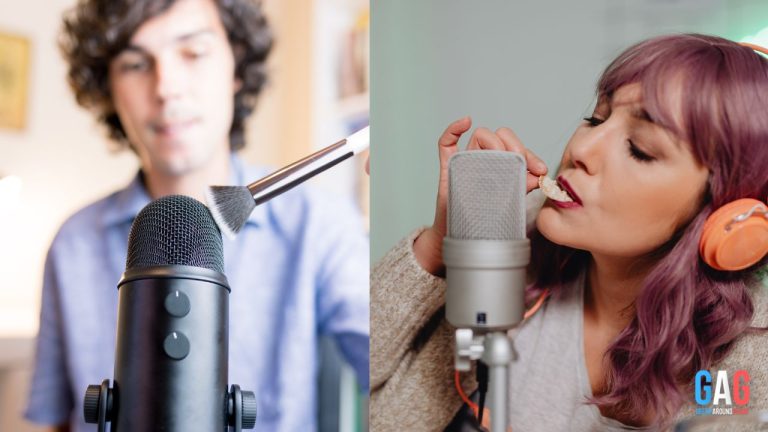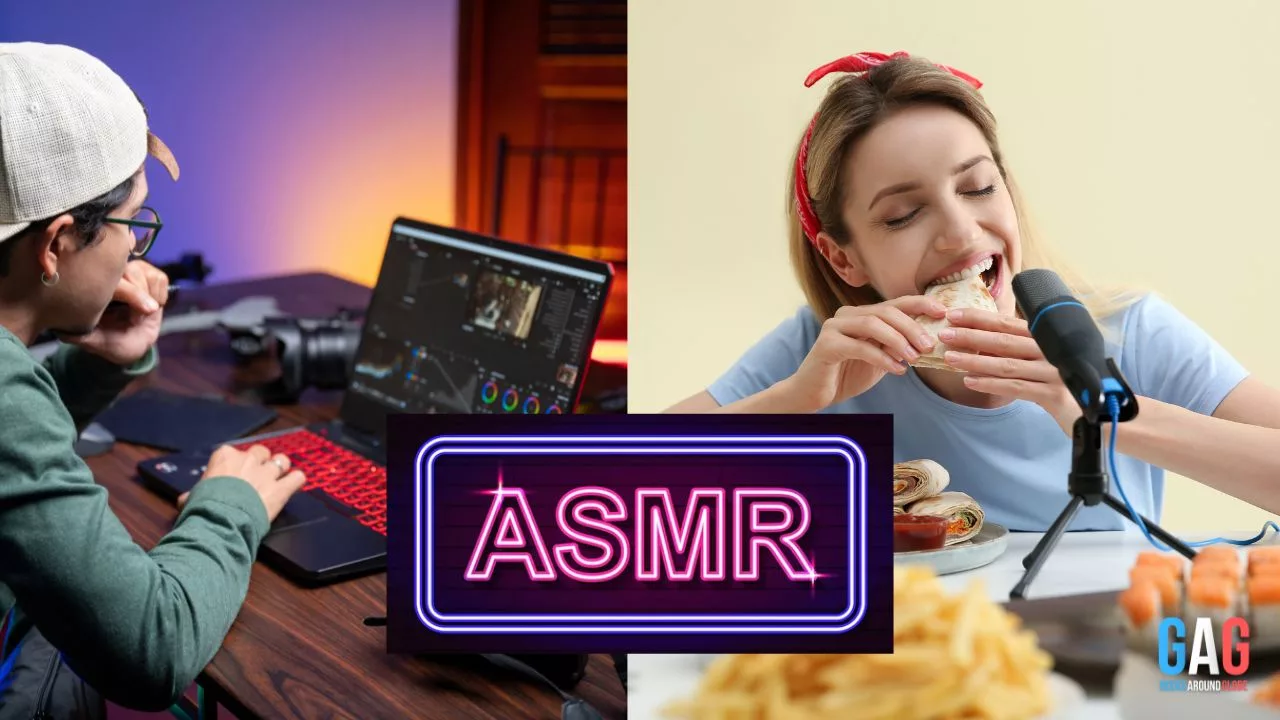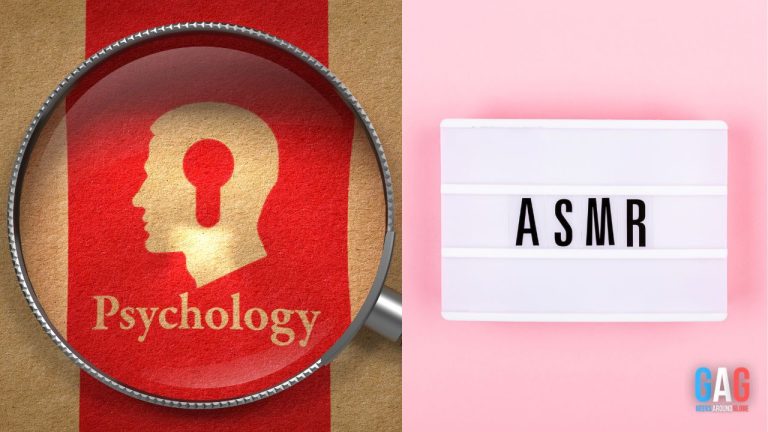- 1. Meet Jennifer Allen Who Invented ASMR
- 2. The First ASMR Video
- 3. Why do people watch ASMR videos?
- 4. Experiencing ASMR
- 5. How does the sensation of ASMR feel?
- 6. How do people know if they have ASMR?
- 7. How does ASMR Affect Brain Activity?: What We Know So Far
- 8. ASMR: A New Way to Relax for Kids?
- 9. What type of ASMR is most prevalent?
- 10. What does ASMR stand for on YouTube?
- 11. Who Is The most popular ASMR Youtuber?
- 12. Looking for some amazing ASMR content? Check These Creators
- 13. Will ASMR still be a thing in 2023?
ASMR, or Automatic Sensory Meridian Response, is a phenomenon many experiences when engaging in certain activities or watching specific videos. Most people describe the feeling as a soothing, often tranquil sensation that starts on the scalp and moves down the body. This “brain massage” is brought on by calming sights and sounds, including voices, accents, and cracks.
ASMR has become increasingly popular in recent years as more and more people are looking for ways to relax and de-stress. If you’re interested in trying ASMR, you can do a few things to get started.
Meet Jennifer Allen Who Invented ASMR
The term ASMR was coined relatively recently, but the phenomenon itself is not new. People have reported experiencing ASMR for years, though it was never given a name and was largely unknown outside small communities.
That all changed in 2010 when Jennifer Allen founded a Facebook group dedicated to exploring ASMR. The group quickly grew as more and more people realized they were not alone in their experiences. Thanks to Jennifer Allen’s efforts, ASMR is now a well-known phenomenon with a large and growing online community.
The First ASMR Video
No one knows for sure who posted the first ASMR video on YouTube. However, many believe that it was WhisperingLife ASMR. The channel posted a video in 2009 titled “Whisper 1 – hello.” The video’s black background features a lo-fi recording of an ASMRtist whispering.
Why do people watch ASMR videos?
ASMR videos cause some people a pleasant, tingling sensation, which can reduce anxiety and encourage better sleep. However, not everyone experiences it.
According to a new study, those with greater levels of anxiety and neuroticism are more likely to benefit from ASMR videos. As a simple remedy, ASMR might be a useful tool for people suffering from anxiety.
Experiencing ASMR
There are a few different ways that you can experience ASMR. The most popular method is by watching ASMR videos on YouTube. There are thousands of other videos to choose from, so you’re sure to find one that suits your needs.
You can also listen to ASMR audio recordings or try out ASMR triggers yourself. Some common triggers include whispering, soft speaking, crinkling noises, and slow movements.
If you’re new to ASMR, it’s essential to start with something mild and work your way up. Some people find that specific triggers are too intense and can cause anxiety instead of relaxation. Once you find a motivation that works for you, stick with it, and do not be afraid to experiment. You may find that different triggers work at other times or in different situations.
ASMR is a phenomenon that can provide a much-needed sense of calm and relaxation in our hectic lives. If you’re interested in trying ASMR, there are a few different ways to go about it. First, experiment with varying triggers until you find one that works for you, and then sit back and enjoy the brain massage!
How does the sensation of ASMR feel?
ASMR is occasionally referred to as a “brain orgasm” by those who write about it. It doesn’t create the same tingling sensation as an emotional encounter, such as hearing a wonderful piece of music.
According to experts, the difference between the two is where you have it. “Chills” seem to happen everywhere and all at once. ASMR tingling begins in the head and neck and can sometimes spread to the arms and legs. It can also occur as waves or pulses.
How do people know if they have ASMR?
Have you ever felt tingles in the back of your head or neck when listening to salmon sizzling on a pan, watching someone fold clothing, or receiving a haircut? If you answered yes, you might be experiencing ASMR.
Compared to matched controls, persons who experienced ASMR had considerably greater levels of Openness and Neuroticism and significantly lower levels of Conscientiousness, Extraversion, and Agreeableness. As a result, if you have ASMR, you are probably more creative, have a wide range of interests, and are more prone to experience melancholy, anxiety, and mood swings.
Also read: What Kind of a Personality Do You Have Based on Your ASMR Taste
How does ASMR Affect Brain Activity?: What We Know So Far
ASMR refers to the pleasurable feeling of tingling sensations in the head and neck that some people experience in response to specific triggers, such as soft speaking, certain sounds, or even visual stimuli.
In particular, ASMR was found to increase low-frequency oscillations while decreasing high-frequency oscillations. This suggests that ASMR may have a calming effect on the brain.
In a small study published in Frontiers in Psychology, researchers used EEG to measure brain activity in participants who reported experiencing ASMR. The researchers discovered that ASMR was connected to a significant change in five frequency bands in several brain regions.
While the exact mechanism behind ASMR is still unclear, some evidence suggests it is related to dopamine release in the brain.
Dopamine is a neurotransmitter that plays a vital role in pleasure and motivation, and it has been linked to other tingling sensations known as frisson and aura. While more research is needed to understand how ASMR works, it is clear that it provides many people with a profoundly calming and relaxing experience.
While the jury is still out on what exactly causes ASMR, some evidence suggests that it may be connected to changes in brain activity. Here’s what we know so far about how ASMR affects the brain.
Why Does This Matter?
By encouraging relaxation and theta brain waves, early research has revealed that ASMR can assist in putting your body and brain in the proper position for deep, healthy sleep.
In addition, many people who like ASMR experience fewer headaches, reduced blood pressure, and less anxiety. While these are all claims that align with what has been demonstrated by research, additional study is required to substantiate these statements.
ASMR: A New Way to Relax for Kids?
While ASMR is often experienced as a relaxing and sleep-inducing sensation, it has also been shown to provide other benefits, such as reducing anxiety and improving mood. Importantly, ASMR is also beneficial for children.
Studies have demonstrated that ASMR can help with sleeplessness, sadness, and anxiety in kids. Additionally, ASMR is thought to be beneficial for physical growth and development. Given the many benefits of ASMR, it seems appropriate for kids of all ages.
What type of ASMR is most prevalent?
whispering
The most popular type of ASMR is whispering. This can be because it is one of the most common triggers, so people are more likely to be familiar with it.
Additionally, many people find whispering a very relaxing and calming sensation.
Tapping
Tapping is also a popular trigger, as it can produce a gentle tingling sensation that can help to improve mood and promote relaxation.
Physical touch
Physical touch is another popular ASMR trigger, as it can provide a sense of comfort and connection.
Personal attention
Personal attention is also a popular trigger, as it can create a feeling of intimacy and connection.
Page turning
Page turning is also a popular ASMR trigger, as it can produce a gentle sound that can help to improve focus and concentration.
What does ASMR stand for on YouTube?
ASMR videos often involve triggers such as soft speaking, gentle touching, and slow movements. Some people find these videos relaxing, while others find them annoying.
However, there is no denying that ASMR videos can be viral on YouTube. Some of the most popular ASMRtists have millions of subscribers and views. So, if you’re curious about ASMR, then YouTube is a great place to start exploring. Also, many ASMR YouTubers make money through their youtube channel.
The relatively new video-sharing platform TikTok has some good ASMR videos too.
Who Is The most popular ASMR Youtuber?
Gibi ASMR, or Gibi for short, is the most popular ASMR YouTuber on the internet. She has over 4 million subscribers, and her videos have been viewed over 100 million times. 27 years old Gibi is an American ASMR performer, YouTube personality, Twitch streamer, and cosplayer.
Gibi’s videos are known for their high-quality production values and gentle, relaxing ASMR sounds. Gibi ASMR uses several Microphones in her ASMR videos. but mostly she is using the Blue Yeti microphone for her videos.
Her most popular video, “Fastest ASMR | Dentist, Eye, Cranial Nerve, Sleep Clinic,” has been viewed over 47 million times.
Looking for some amazing ASMR content? Check These Creators
There are a lot of great ASMR creators out there, but some stand out from the rest.
Gibi ASMR is among the most popular ASMR creators, with over 4 million subscribers on YouTube. She’s known for her soft speaking voice and gentle touch, which can help trigger ASMR in viewers.
WhispersRed ASMR is another well-known creator known for her whispery voice and close-up videos. Her videos are often quite long, allowing viewers to relax and fall into a trance-like state.
ASMR Darling is another top creator known for her creative and innovative videos. For example, she often uses props and toys in her videos to create unique sounds that help trigger ASMR.
Finally, Karuna Satori ASMR is one of the most popular ASMR creators on Youtube, with over 1.2 million followers. She’s known for her soft voice and relaxing touch, which can help people drift off to sleep.
Will ASMR still be a thing in 2023?
In recent years, the ASMR phenomenon has gained popularity online, with YouTubers and Tiktokers creating video content to trigger the response.
While it is difficult to say whether ASMR will still be popular in 2022, its growing popularity suggests that it may well be. With more and more people becoming aware of the response and seeking out content that triggers it, ASMR may become a mainstream source of relaxation in the years to come.







